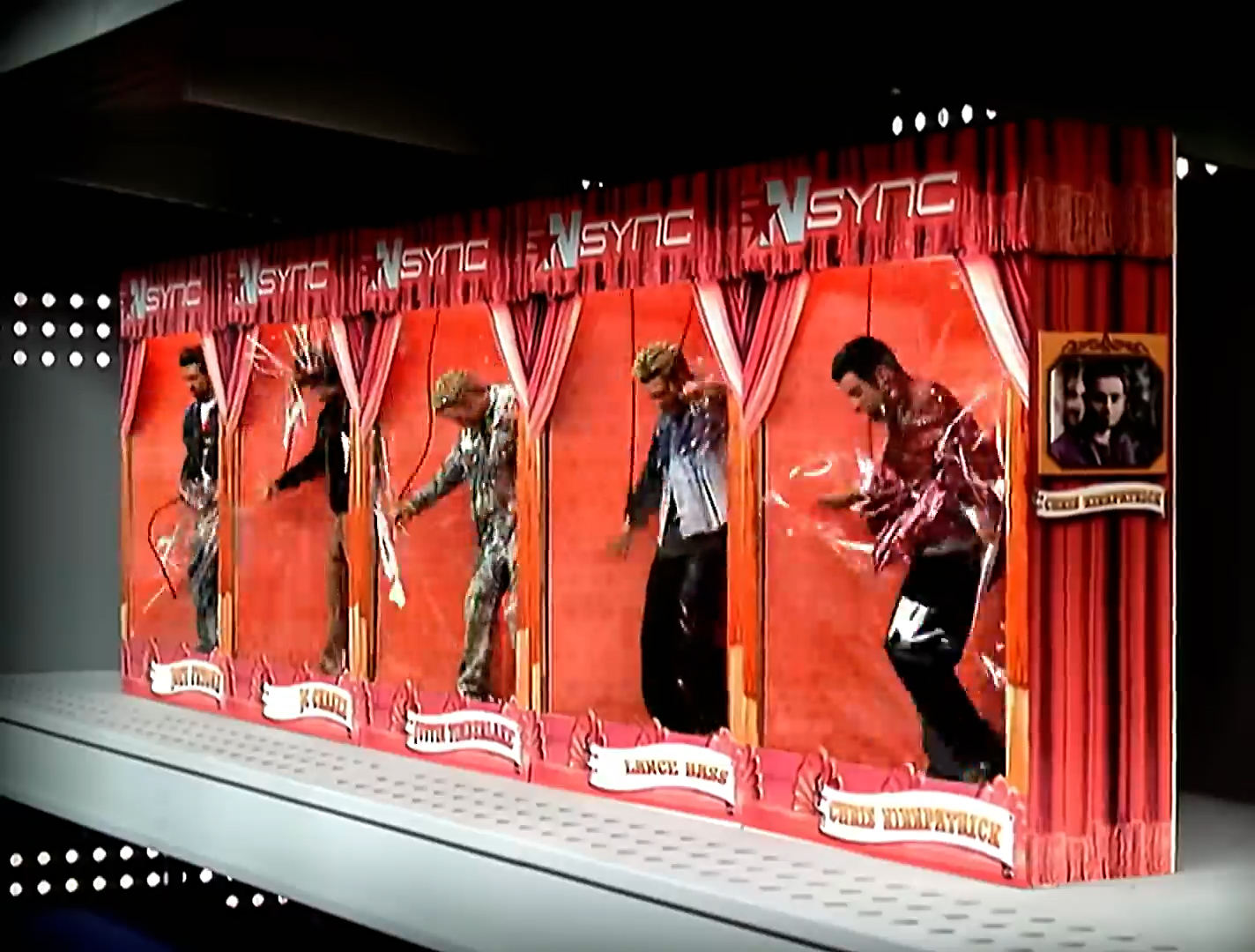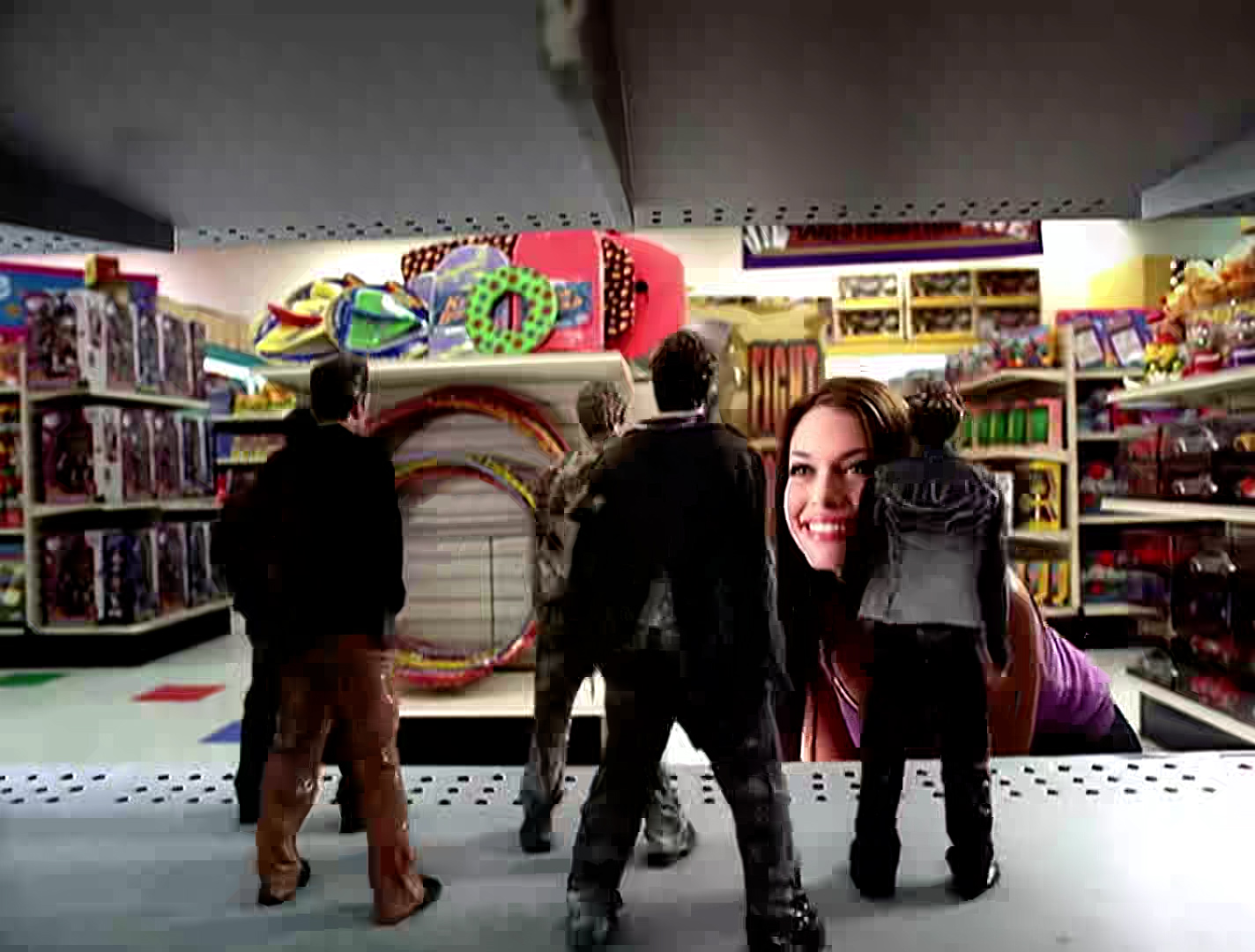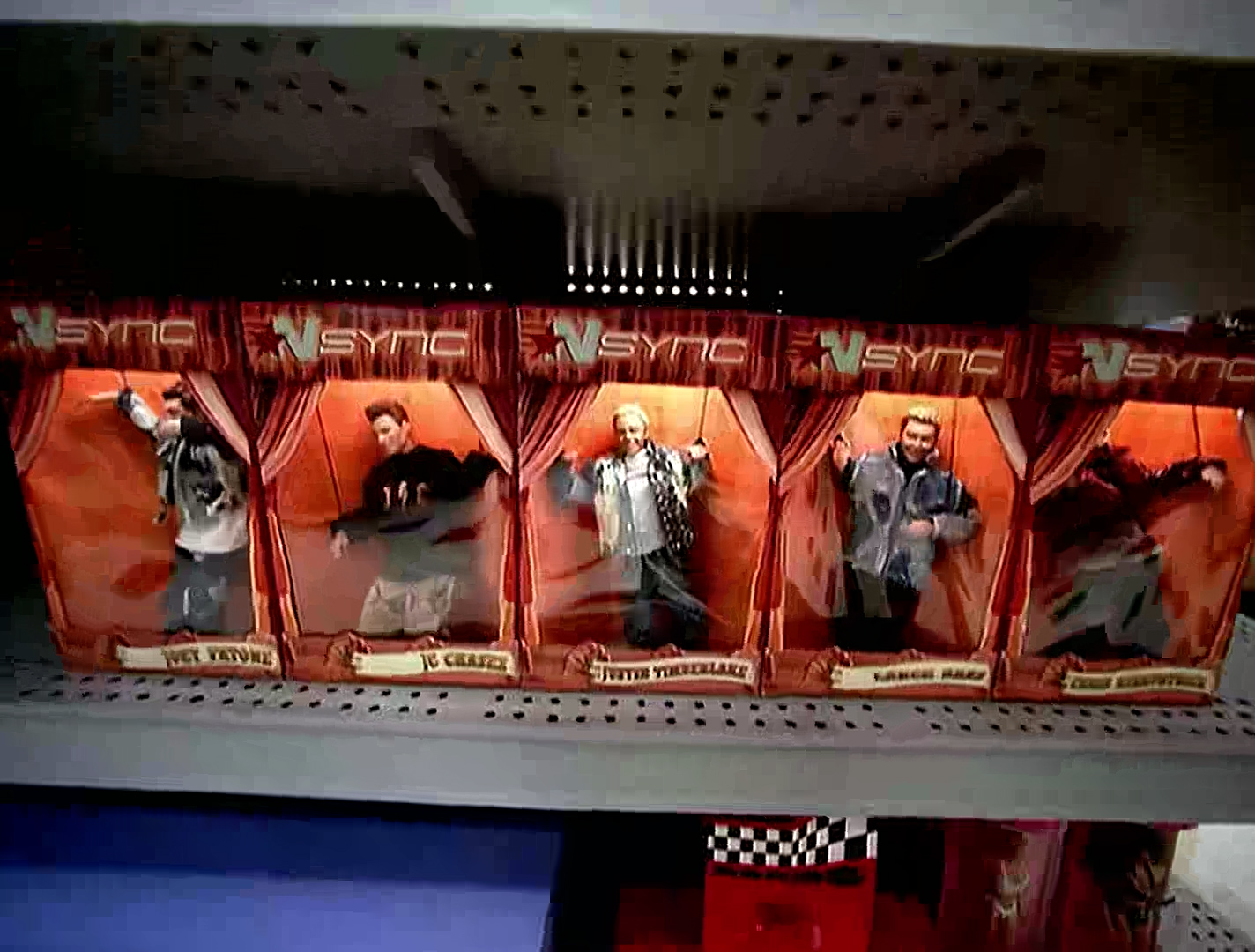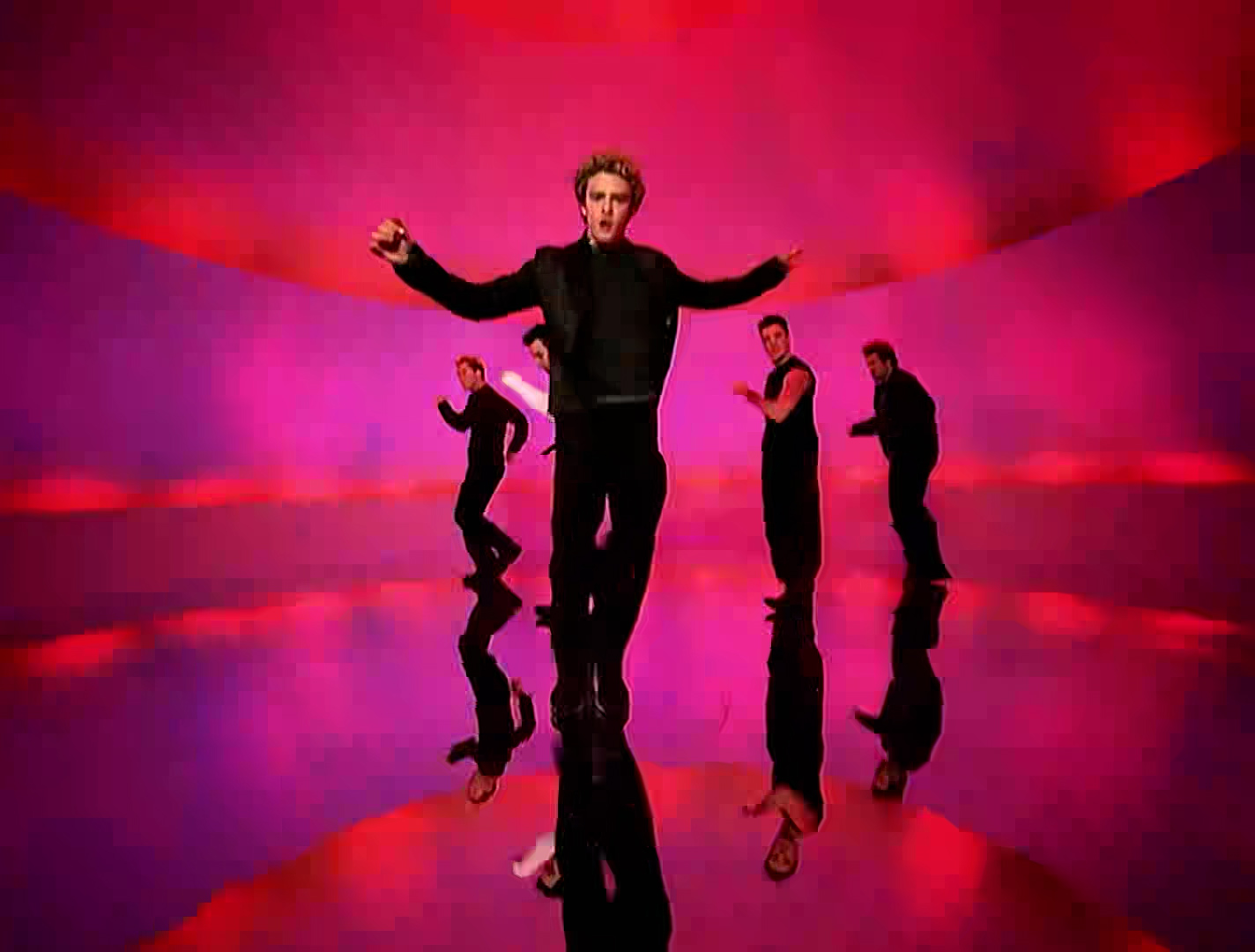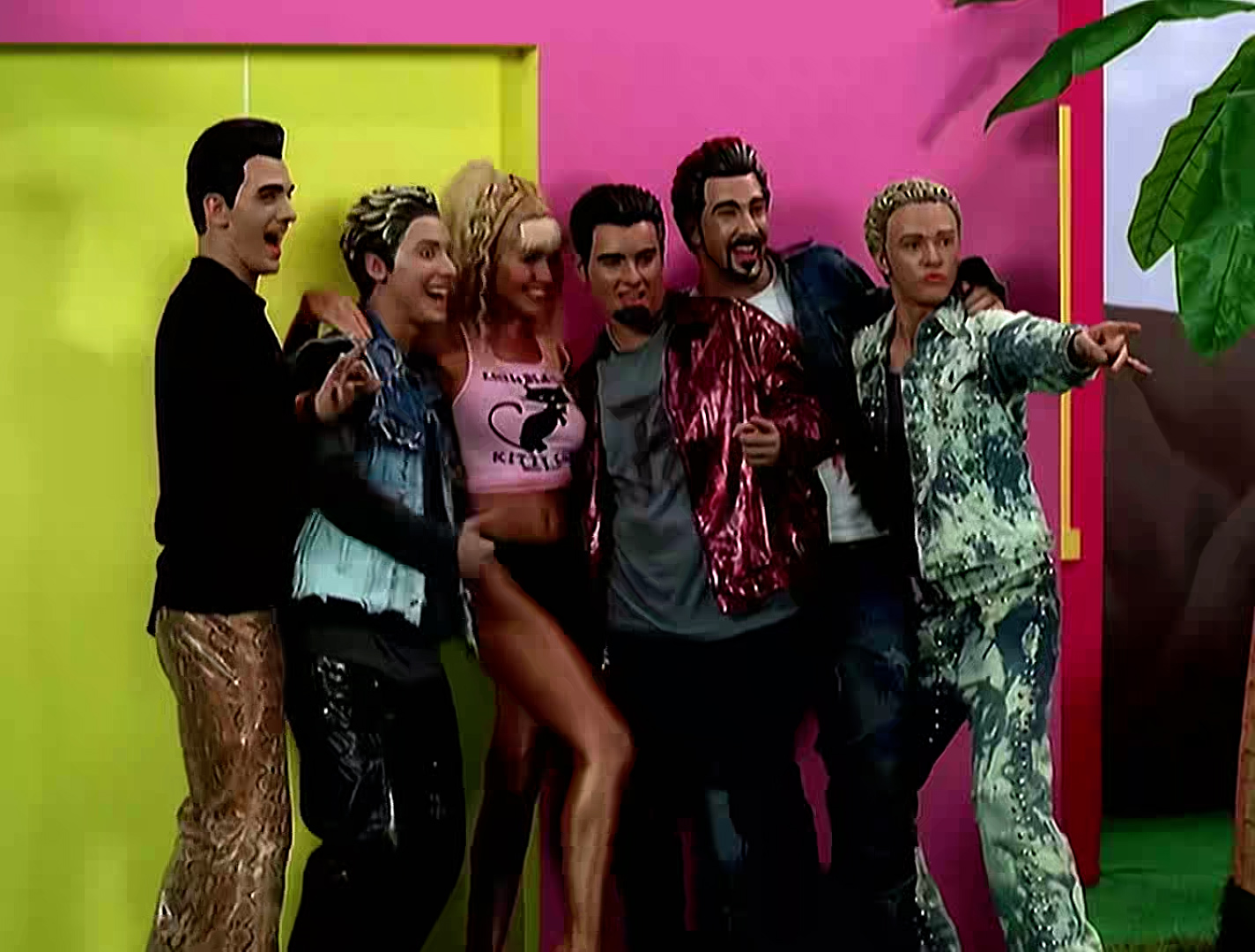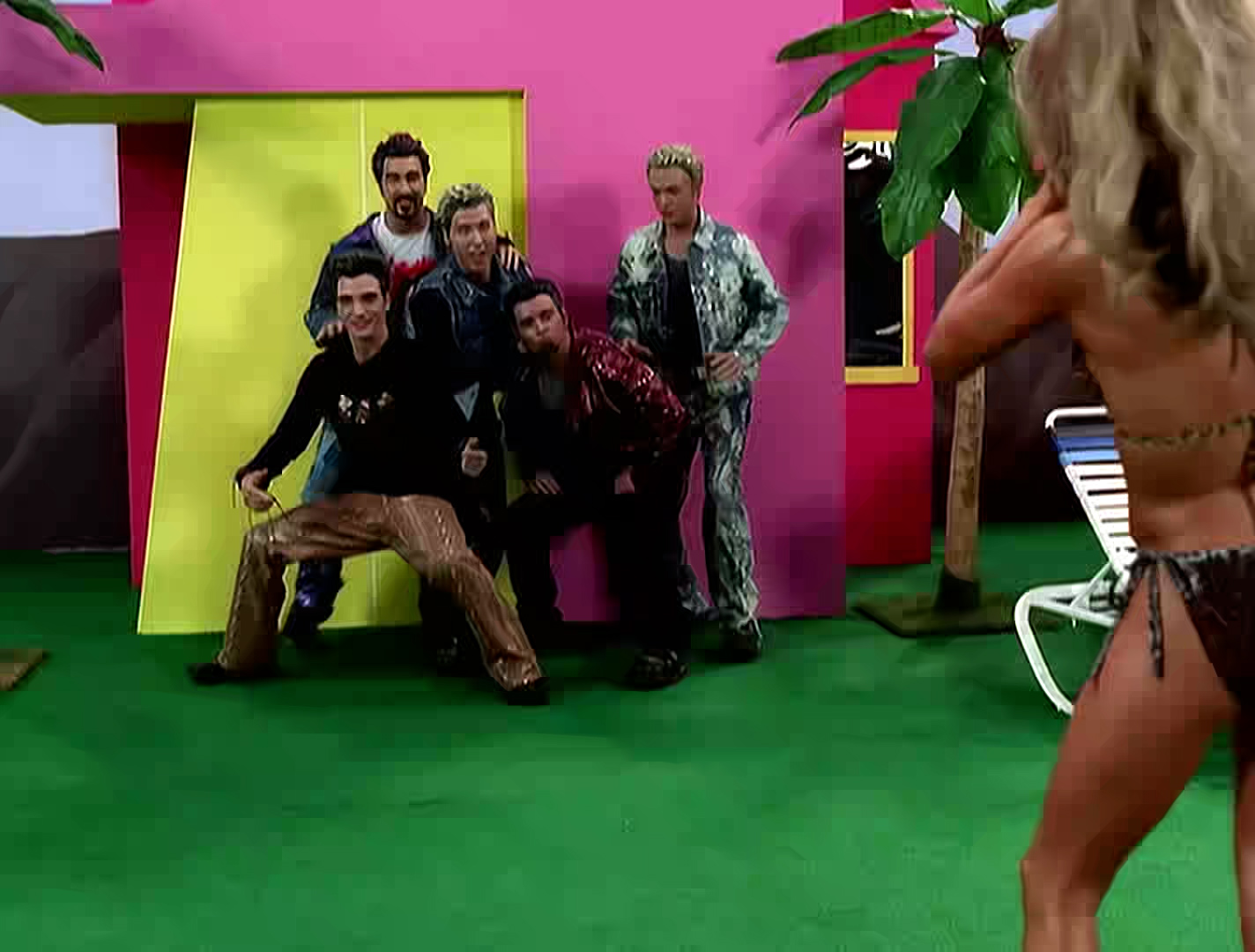Music Videos
Nsync "It's Gonna Be Me"
The music video for “It’s Gonna Be Me” was directed by Wayne Isham, and filmed from April 26 to 28, 2000, in Los Angeles Center Studios,[47][48] with additional footage shot at Play Co. Toys on Soledad Canyon Road in Canyon Country, Santa Clarita, California. NSYNC decided to retain the puppet-motif used in their album No Strings Attached by being portrayed as dolls that fight other toys in a toy store. Isham visited Play Co. Toys, which he duplicated by creating multiple shelves on the set that formed a regular shelf. The store was chosen by a production company scouting for stores, as it provided the film crew with more freedom to rearrange and dismantle objects.[49] He decided to bring back model Kim Smith from the “Bye Bye Bye” music video in order for both videos to flow seamlessly with each another.[50]
The music video used limited computer-generated imagery (CGI) as Isham wanted it to appear authentic. Life-sized dominoes were used, which were shot falling across the floor.[50] Initially, Isham pitched the idea for San Francisco-based effects house company Radium to create the dolls by using CGI. However, the company declined, as they would not be able to finish by the requested deadline.[51] Makeup artist Screaming Mad George was hired for the video, which he used prosthetic makeup to transform NSYNC into dolls in six hours.[47] The band kept the makeup on for a 24-hour period, where 22 hours was allocated in shooting the music video.[51] Estee Stanley was also involved with costuming as the video’s stylist.[52]
NSYNC were then placed against a green screen at the suggestion of Isham, after he saw a Slim Jim advertisement. The band were filmed at 12 frames per second, on a base of 24, to ensure that they resembled dolls. Consequently, both the song and dancing members needed to perform at half speed due to mathematical problems, which was also attributed to the set scaled 7.2 times larger than the real world. During the scene when the dolls are scanned at the checkout counter and reverted to human size, several shots of each member were superimposed in front of a green screen, which was animated by Radium through the use of Inferno steadily growing each doll back up to human height. The company also assisted in creating digital effects using Inferno, such as the constant “morph zooms” used to transition between scenes.[51] The music video debuted on MTV’s Making the Video on May 21, 2000,[53] and also made its first appearance on Total Request Live on May 23, 2000.[50]
Date:
September 21, 2000



